10 Essential Tips for Catching Honeybee Swarms
- May 24, 2024
- 0 comment
Welcome to the ultimate guide on catching honeybee swarms—a key skill for any beekeeper. Honeybees play a crucial role in pollinating both crops and wild plants, which is vital for our environment and agriculture.

However, these important pollinators face threats from habitat loss, pesticides, and diseases. By learning how to effectively capture swarms, beekeepers can not only grow their apiaries but also aid in preserving these essential insects. This guide provides straightforward, practical tips to help you successfully attract and manage honeybee swarms, supporting their health and the diversity of our ecosystems.
1. Select the Right Swarm Trap Size

For optimal success in catching honeybee swarms, it’s crucial to select the right swarm trap size. A suitable trap should have a capacity between 35 to 60 liters, roughly equivalent to a 10-frame deep hive body, ensuring it is spacious enough to attract substantial swarms while being manageable in weight. Ensure your trap is designed to withstand weather elements, effectively keeping out rain and blocking light to create an inviting, secure environment for the bees. The entrance of the trap should be about 1.5 to 2 square inches, which is ample for bees but also small enough to deter birds and rodents, adding an extra layer of security and making the trap an ideal new home for the swarm.
2. Incorporate Frames in Your Swarm Trap
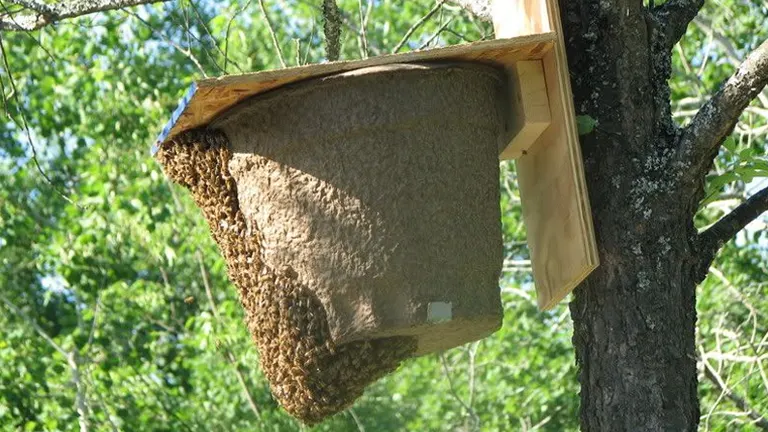
It’s beneficial to incorporate frames into your swarm trap. Utilizing frames, such as those in a flowerpot swarm trap equipped with an internal template, greatly simplifies the transfer process. This setup not only prevents the mess typically associated with non-frame traps but also supports the structural integrity of the newly formed colony, making it easier to integrate the bees into your apiary without disruption.
3. Utilize Old Bee Equipment
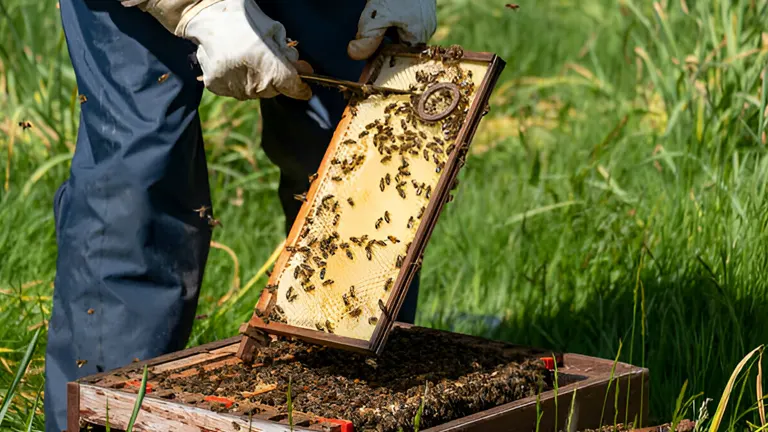
Utilize old bee equipment, which carries the familiar scent of bees that naturally lures new swarms. If you lack previously used combs, a practical alternative is to coat the frames and the interior of your trap with beeswax, thereby simulating the inviting environment of an established hive. This approach leverages the natural inclinations of bees towards familiar scents, significantly increasing the likelihood of successfully capturing a swarm.
4. Strategic Location
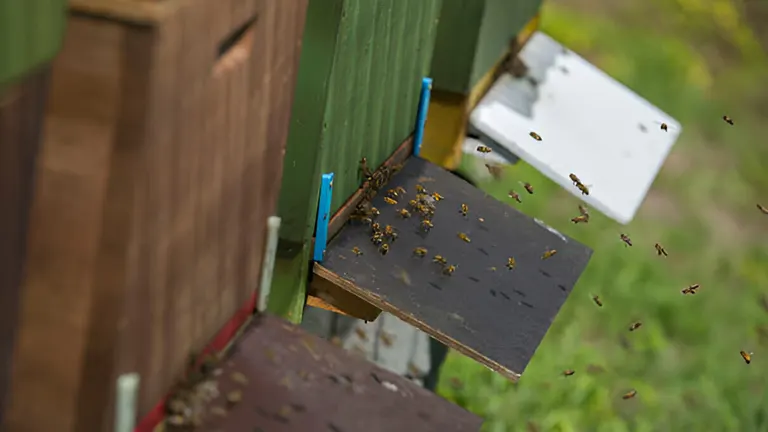
Strategically place your swarm traps in locations abundant with essential resources such as water sources, gardens, and proximity to other apiaries. These areas naturally draw swarms, increasing your chances of success. Additionally, ensure you have the necessary permissions to install your traps on selected properties to maintain good relationships and legal compliance.
5. Visibility and Accessibility
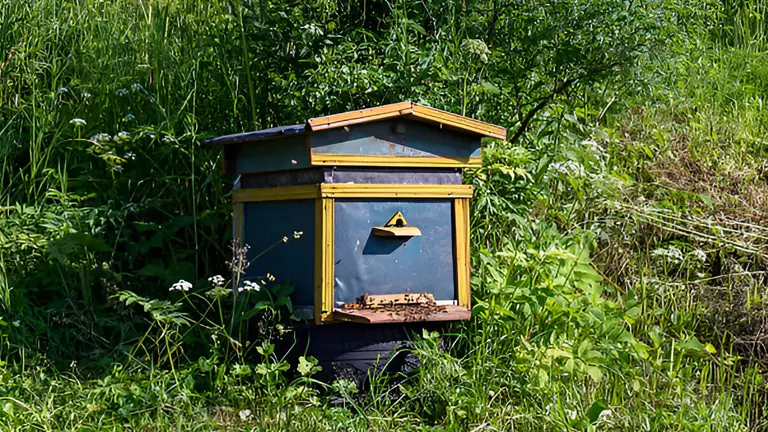
Ensure they are both visible and accessible to bees. Bees rely on landmarks to navigate, so position your traps where they can be easily spotted and are not obscured by dense foliage or buried deep within thick bushes. This strategic visibility helps bees locate the traps quickly and enhances your chances of capturing swarms.
6. Stability of Installation
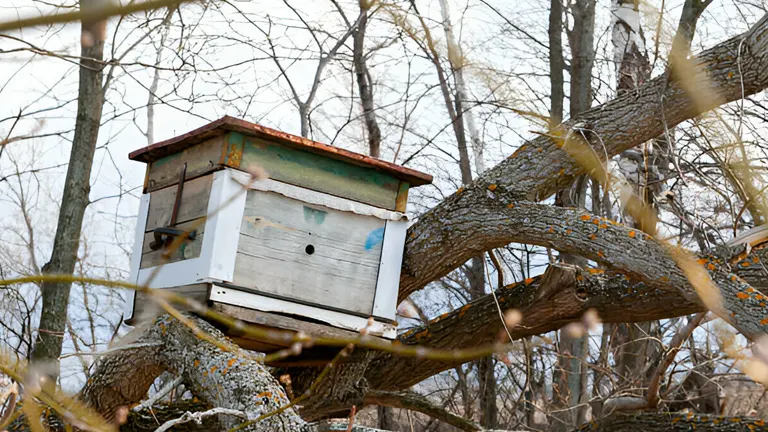
Ensure they are securely mounted in a sturdy tree, on a robust post, or on a stable stand to prevent swaying in the wind. The ideal height for these traps is between 8 to 15 feet off the ground, although heights as low as 7 feet, reachable with a three-step stool, have also proven to be effective. This stability not only helps in attracting bees but also makes the traps safer and easier to manage, especially when it’s time to retrieve a swarm.
7. Secure Attachment
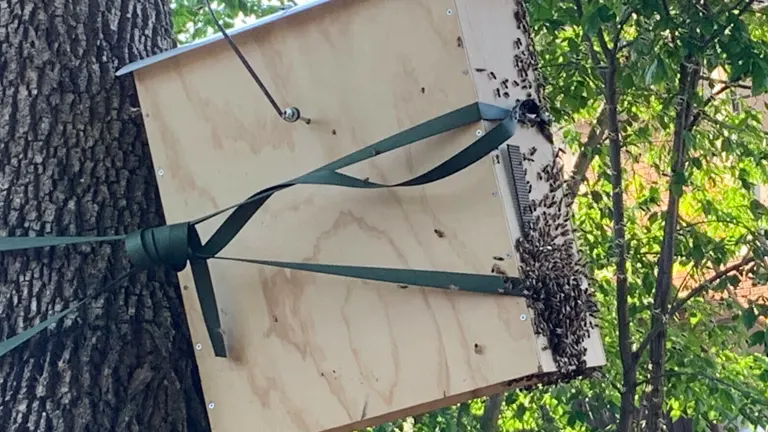
To ensure your swarm trap remains firmly in place, attach it securely using a bungee cord or a ratchet strap to a tree or post. For added convenience, especially during maintenance and when collecting swarms, utilizing a French cleat system can be extremely beneficial. This method allows for easy attachment and quick detachment of the trap, streamlining the process of transporting the swarm to your apiary.
8. Orient the Trap Entrance
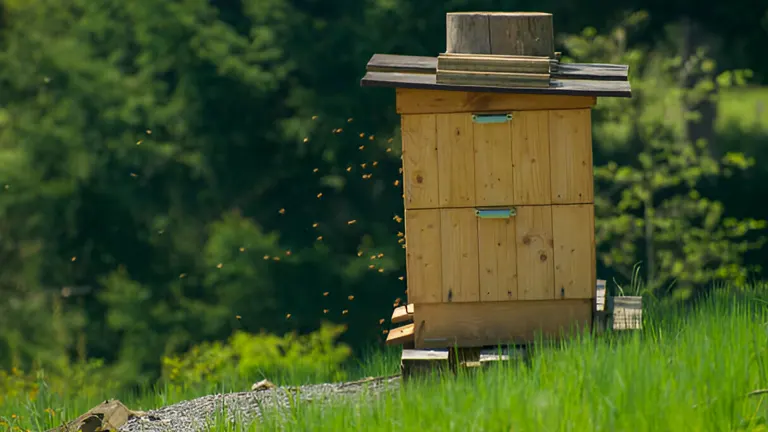
For optimal results, orient the entrance of your swarm trap to face south or southeast. This specific positioning has been empirically shown to increase the likelihood of attracting swarms, enhancing your chances of success in bee capturing endeavors.
9. Use Effective Baits
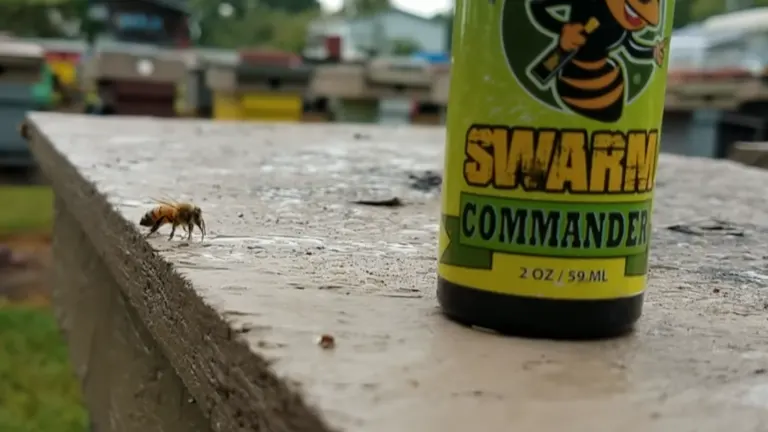
Use bait such as lemongrass oil or commercial attractants like Swarm Commander in your traps. It’s crucial to apply these sparingly, as excessive amounts can deter bees much like overly strong perfume or cologne. A simple method is to dab a small amount onto a cotton ball or Q-tip and place it inside the trap, ensuring it’s not overwhelming but just enough to entice the bees.
10. Leverage Success
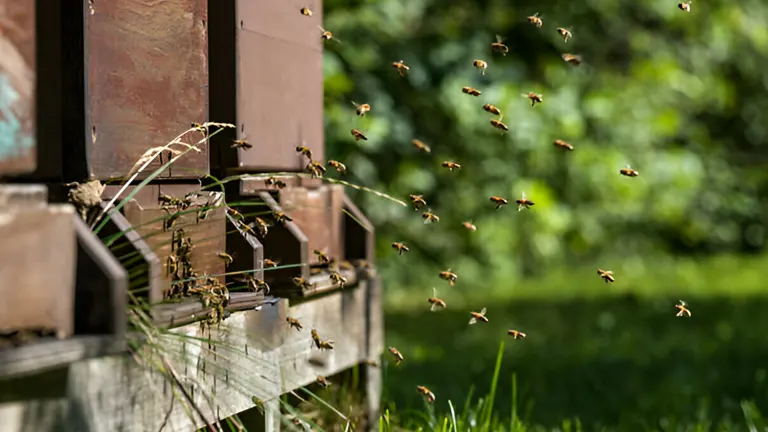
To maximize your bee-catching efforts, leverage successful locations where swarms have previously been captured. Bees often return to familiar sites, making these spots prime for setting up additional traps. By reusing locations that have proven successful, you can significantly increase your chances of catching multiple swarms over time.
Bonus Tip: Keep Learning and Stay Prepared
Always be ready to act during swarm season and keep educating yourself on bee behavior and new trapping techniques. Success in beekeeping comes from continuous learning and adapting.
Troubleshooting Common Issues
Even with the best plans and preparations, beekeepers may face challenges while trying to capture swarms. Here are some common issues and expert-recommended solutions:
- Attracting Pests Instead of Bees:
- Problem: Sometimes, swarm traps attract unwanted pests like ants, wasps, or rodents instead of bees.
- Solution: Ensure that your traps are properly sealed and use smaller entrance holes to deter larger pests. Consider applying natural repellents like peppermint oil around the trap to discourage ants and wasps without deterring bees.
- Low Swarm Capture Rates:
- Problem: You might find that your traps are not attracting swarms as expected.
- Solution: Review the placement of your traps. They should be in locations with high bee activity and near natural bee habitats. Also, refresh the bait more frequently, using attractants like lemongrass oil or proprietary baits like Swarm Commander to increase allure.
- Swarm Abandonment:
- Problem: Sometimes bees may initially occupy a trap but then abandon it.
- Solution: This can happen if the inside of the trap becomes too hot or if there are disturbances. Ensure your traps are shaded and stable. Minimize disturbances by checking the traps infrequently and quietly.
- Trap Damage or Weathering:
- Problem: Traps exposed to severe weather may deteriorate or become less effective.
- Solution: Use durable materials and weather-resistant coatings to construct or mend your traps. Consider a periodic review of your traps’ condition throughout the season and after any major weather events.
- Queen Bee Absence in the Swarm:
- Problem: Capturing a swarm without a queen can lead to the failure of the swarm to establish in the new hive.
- Solution: After capturing a swarm, observe the bees’ behavior. A queen-right swarm will show signs of organizing quickly and starting comb construction. If there’s no queen, consider introducing a new queen to the swarm or combining it with another colony.
Maintenance and Aftercare
Maintaining swarm traps and managing newly captured swarms are crucial for the health of the bees and the success of your apiary. Here’s how to handle these aspects effectively:
- Regular Checks: Inspect your swarm traps every two weeks during the active swarm season to ensure they are intact and free from pests. Check for signs of occupancy, such as bees flying in and out or accumulation of propolis.
- Clean and Repair: After each swarm capture, clean the trap thoroughly before reusing it. Repair any damages to ensure it remains weather-resistant and secure. This helps prevent diseases and keeps the trap attractive to new swarms.
- Transfer to a Hive: Once you capture a swarm, transfer the bees to a permanent hive as soon as possible. Carefully move the frames from the swarm trap to the hive, ensuring the queen is safely relocated.
- Integration Process: Introduce a new swarm to your existing apiary with care. Place the new hive at a considerable distance from established hives to prevent territorial disputes. Gradually move the hive closer over several weeks if you wish to consolidate the apiary.
- Monitor Health: Keep a close eye on the new swarm’s health and behavior. Check for normal activities like comb building and foraging. Monitor for any signs of disease or queen failure, and address these issues promptly.
- Feed if Necessary: If natural food sources are scarce, especially just after capturing, provide sugar syrup to help the swarm establish itself in its new home.
Conclusion
By following these tips, you’ll increase your chances of successfully capturing honeybee swarms and contributing positively to the health and growth of your apiary. Remember, each swarm caught is a new opportunity to foster the well-being of these essential pollinators.
FAQs
- What is the ideal volume for a honeybee swarm trap?
The most effective swarm traps are between 35 to 60 liters in volume, comparable to a 10-frame deep hive body, which provides ample space for a swarm to establish. - Can the placement of a swarm trap affect its success rate?
Absolutely! Placing traps near natural bee habitats and ensuring they are visible and accessible to bees increases success rates. Ideal placements include areas near water sources, flowering gardens, and other apiaries. - What type of bait should I use to attract swarms?
Lemongrass oil and commercial attractants like Swarm Commander are highly effective. These should be applied sparingly to mimic the natural pheromones of bees. - How often should I check my swarm traps?
Regular checks are recommended, but it’s important not to disturb the traps too frequently. Checking every two weeks during the swarm season is sufficient to monitor activity without causing disruption. - What safety gear do I need when handling swarm traps?
Beekeepers should wear protective clothing, including a veil, gloves, and a bee suit, to ensure safety from stings during the capture and transfer of swarms. - How do I safely transfer a captured swarm to a new hive?
Use frames in your swarm trap to facilitate easy transfer. Gently move the frames from the trap to your hive, ensuring minimal disturbance to the bees. - What common problems might I encounter with my swarm traps?
Issues include attracting pests, low capture rates, and swarms abandoning the trap. Effective troubleshooting involves adjusting trap locations, refreshing baits, and ensuring the traps are secure and in good condition. - Why do bees abandon a swarm trap after initially occupying it?
Factors like overheating inside the trap or excessive vibrations and disturbances can cause bees to abandon a trap. Ensuring a shaded, calm, and stable environment can help mitigate this. - How do I increase the attractiveness of my swarm trap to honeybees?
Beyond using attractants, incorporating old bee equipment and combs that smell like bees can significantly enhance a trap’s allure. - Can capturing swarms impact the local ecosystem?
Capturing swarms can help manage local bee populations and prevent issues caused by swarms in urban areas, contributing positively to both beekeeping practices and the local ecosystem.
We hope these tips help you succeed in your beekeeping adventures and contribute to the thriving of our essential bee populations. Do you have any swarm-catching tips or stories of your own? Share them in the comments below! We love hearing from fellow bee enthusiasts and learning from each other’s experiences. Don’t forget to share this guide with others who might find it helpful. Happy beekeeping!

Charles Hayes
Forestry AuthorI'm Charles Hayes, I bring over 15 years of specialized expertise in landscaping and woodworking, blending artistic design with sustainable environmental stewardship. My career, fueled by a profound passion for the natural world, encompasses extensive education and hands-on experience in creating harmonious, eco-friendly outdoor spaces and responsibly managing forest resources. Recognized for my professional standing, I am committed to continuous learning and certification in cutting-edge practices. My expertise is not only reflected in my work but also in my contributions to community projects, educational workshops, and collaborations with industry leaders. As an authoritative voice in my field, I strive to share knowledge and promote environmentally conscious approaches, making me a trusted resource in landscaping and forestry.


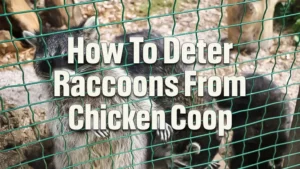









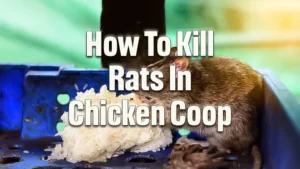
Leave your comment